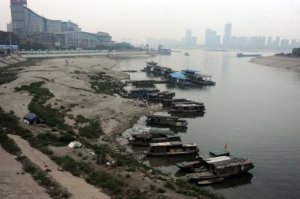Two stories today serve as good examples of the negative externalities that may come with development based on trade–external based development.
One is about clothing manufacturers releasing dangerous chemicals into local water supplies. Add idas, Nike, and Li Ning are accused of releasing harmful chemicals into the Yangtze and Pearl rivers.
idas, Nike, and Li Ning are accused of releasing harmful chemicals into the Yangtze and Pearl rivers.
Another is about Conoco-Phillips and leaking oil in Bohai Bay. They have been ordered to shut-down the pumps.
The 840-square-kilometre (336-square-mile) slick emanating from the oil field in Bohai Bay — which ConocoPhillips operates with China’s state-run oil giant CNOOC — has caused huge anger amid allegations of a cover-up.
On Wednesday, the State Oceanic Administration (SOA) said operations would not be allowed to resume before the source of the spill was fully plugged and “risks eliminated”, as fears over the long-term impact on the environment grow.
“There has been oil seeping continuously into the sea for days from platforms B and C in the Penglai 19-3 oil field and there is still a slick in the surrounding marine areas,” the SOA said in a statement.
An especially interesting story for me because my wife and daughter visited a beach on Bohai Bay just a few days ago. No reports at home about oil slicks, but I guess it might happen.
The interesting observation to make here is how countries are encouraged to sacrifice domestic environment–and maybe public health–in the interest of development.
Greenpeace said eight samples of wastewater discharge from two factories in the Yangtze and Pearl River deltas, identified as suppliers for the brands, contained “a cocktail of hazardous chemicals”.
The Yangtze — China’s longest river — and the Pearl River Delta serve as a source of drinking water for about 67 million people, including those in Hong Kong, according to Greenpeace.
“Our tests of the wastewater found toxic chemicals that have no place in our natural environment,” Greenpeace campaigner Vivien Yau told a news conference in Hong Kong.
It is likely that these companies were facing restrictions that were not not very well enforced. Typically, China is enforcing rules now that some development has occurred.
